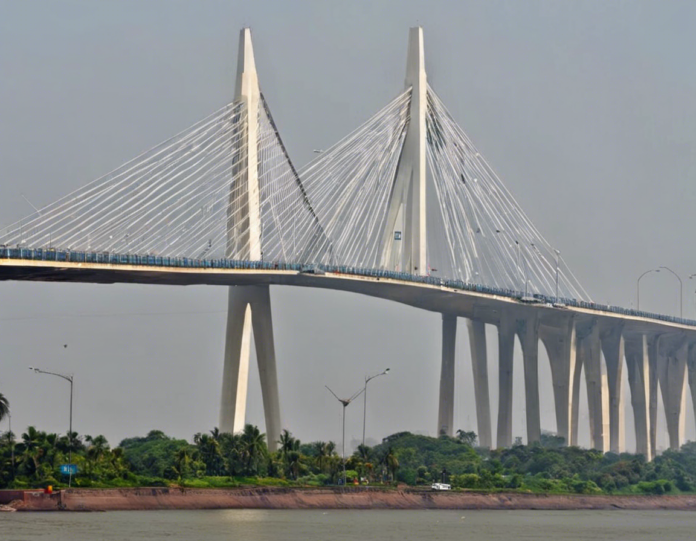Are you planning a visit to Mumbai, India, and looking to explore some of its architectural wonders? If so, then the Atal Setu Bridge should definitely be on your must-see list. This modern engineering marvel is not only a crucial transportation link but also a stunning piece of architecture that showcases India’s prowess in infrastructure development. In this comprehensive post, we will delve into the design, construction, and significance of the Atal Setu Bridge in Mumbai, offering you a deeper understanding of this impressive structure.
History and Significance of Atal Setu Bridge
The Atal Setu Bridge, also known as the Bandra-Worli Sea Link, is a cable-stayed bridge that spans the Mahim Bay connecting the western suburbs of Mumbai with Worli, a locality in South Mumbai. The bridge was commissioned in a bid to alleviate traffic congestion in the city and provide a faster and more efficient transportation route between the two heavily populated areas. It stands as a testimony to India’s ambition for modern infrastructure and urban development.
Design and Architecture
One of the most striking features of the Atal Setu Bridge is its aesthetic design. The bridge’s sleek and contemporary look adds to Mumbai’s skyline, making it a visual delight for residents and visitors alike. The cable-stayed design not only enhances the bridge’s structural integrity but also gives it a sense of architectural elegance.
The engineering behind the bridge is also noteworthy. The structure comprises pre-stressed concrete-steel viaducts and cable-stayed spans, making it a unique amalgamation of modern engineering techniques. The use of cutting-edge technology and materials ensures the bridge’s durability and longevity, even in the face of Mumbai’s hectic traffic conditions and coastal weather.
Construction Challenges and Innovations
The construction of the Atal Setu Bridge was no easy feat. The engineering team faced numerous challenges, including dealing with the dynamic coastal environment, managing heavy traffic flow during construction, and ensuring structural stability in the face of high wind speeds.
To overcome these challenges, the construction team employed state-of-the-art construction techniques and innovative solutions. For instance, the bridge’s foundations were designed to withstand the corrosive effects of seawater, and advanced wind tunnel testing was conducted to optimize the bridge’s aerodynamics. These innovations not only ensured the successful completion of the project but also set new benchmarks in bridge construction technology.
Impact on Urban Development
The Atal Setu Bridge has had a profound impact on urban development in Mumbai. By providing a faster and more efficient transportation link between the western suburbs and South Mumbai, the bridge has helped alleviate traffic congestion on the city’s roads, reducing travel time for thousands of commuters. It has also opened up new avenues for economic growth and development in the areas surrounding the bridge, further solidifying its role as a catalyst for urban progress.
Visiting Atal Setu Bridge
If you’re planning to visit the Atal Setu Bridge, there are a few things to keep in mind. The bridge offers spectacular views of the Arabian Sea and Mumbai’s coastline, especially during sunrise and sunset. It’s recommended to visit the bridge during non-peak hours to enjoy the scenery and take in the architectural marvel in all its glory.
FAQs About Atal Setu Bridge
- What is the length of the Atal Setu Bridge?
-
The bridge spans a total length of approximately 5.6 kilometers.
-
Is there a fee to use the bridge?
-
Yes, a toll fee is charged for vehicles using the bridge.
-
How long did it take to construct the Atal Setu Bridge?
-
The bridge was completed in around 10 years, from start to finish.
-
Can pedestrians walk on the Atal Setu Bridge?
-
Unfortunately, the bridge is only accessible to motor vehicles and not pedestrians.
-
What are the best times to visit the Atal Setu Bridge for optimal views?
- Sunrise and sunset offer the best times to visit the bridge for picturesque views of the Arabian Sea and Mumbai’s skyline.
In conclusion, the Atal Setu Bridge in Mumbai stands as a testament to India’s engineering prowess and commitment to modern infrastructure development. Its innovative design, architectural beauty, and impact on urban development make it a must-visit destination for architecture enthusiasts, urban planners, and anyone looking to witness a marvel of modern engineering. Make sure to include the Atal Setu Bridge in your itinerary during your visit to Mumbai for an unforgettable experience.







